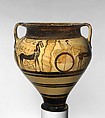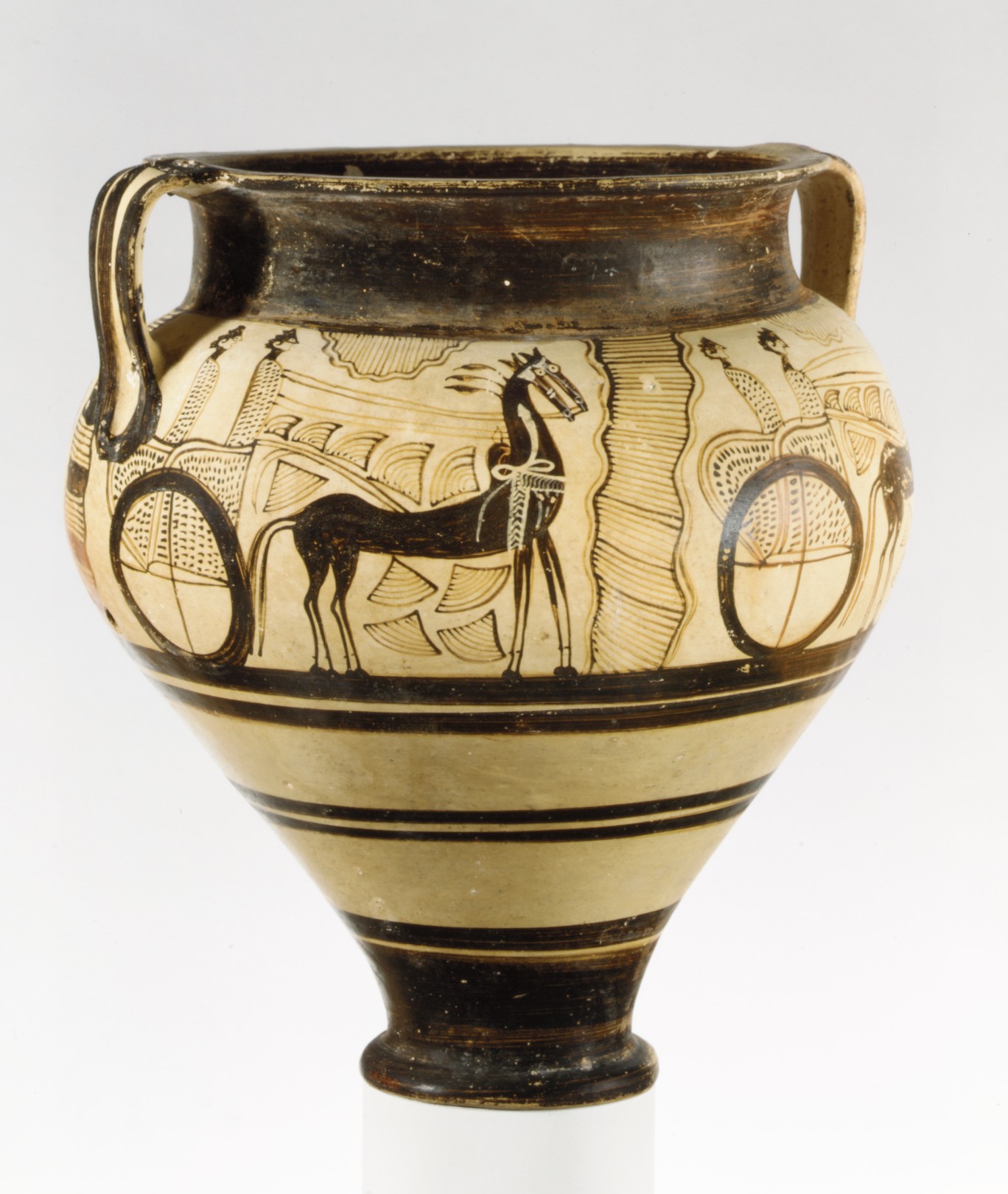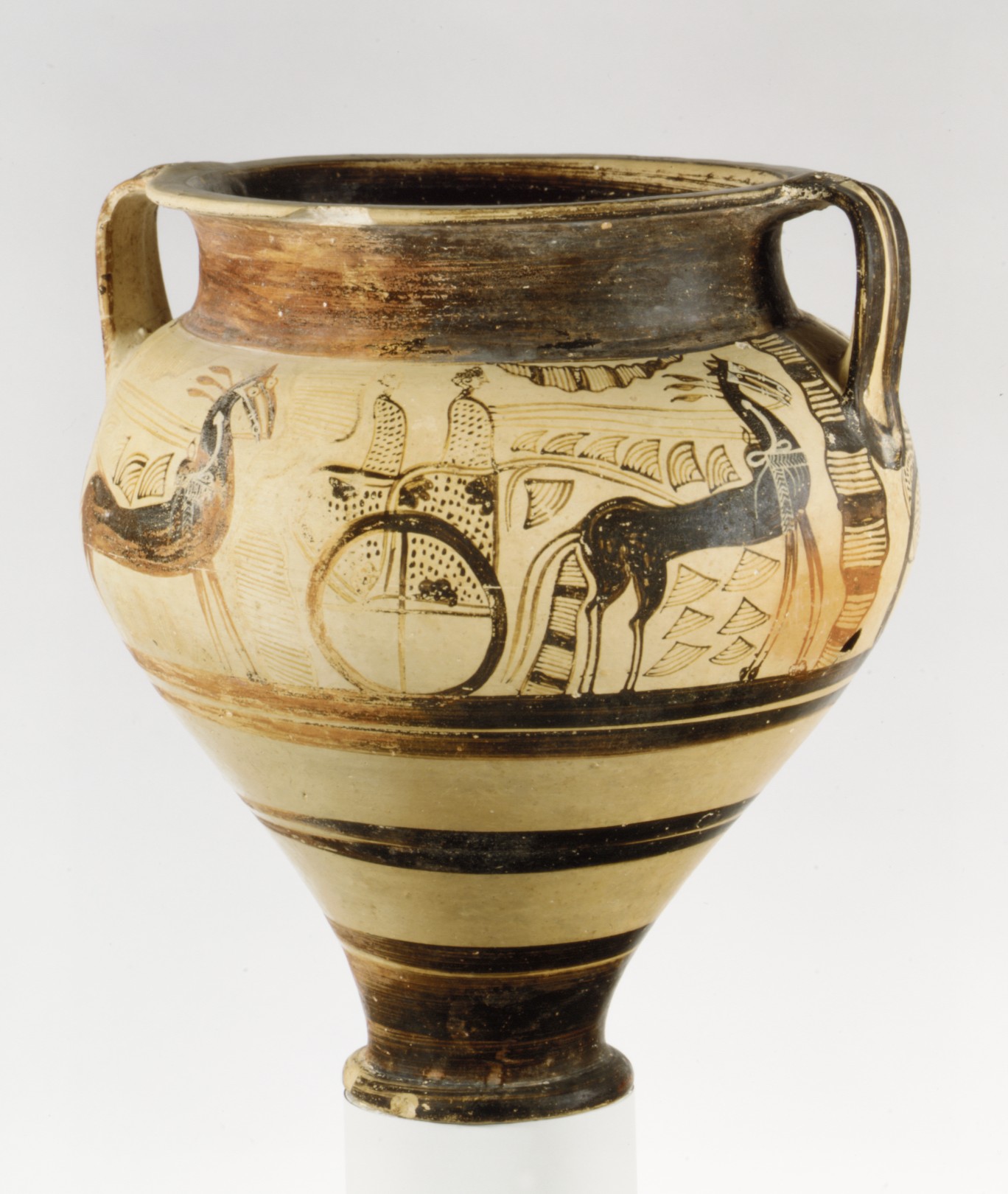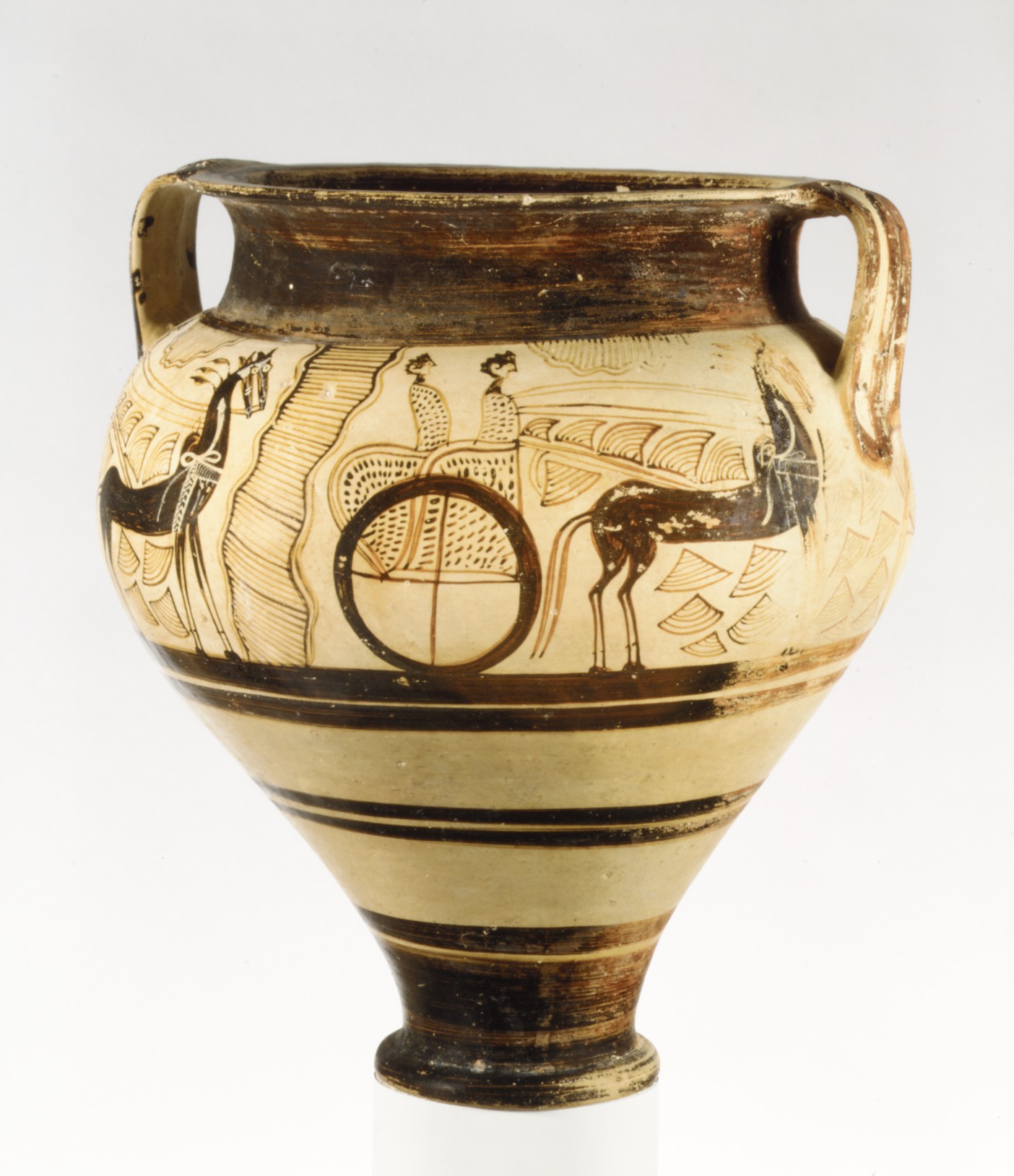Terracotta chariot krater
Not on view
During the fourteenth century B.C. broad and deep-bodied kraters, often decorated with complex pictorial scenes, were produced in Greece, particularly in the Argolid and in Cyprus. A great number of these works came to light on Cyprus, and they were often attributed to artists working in a Cypro-Mycenaean idiom. Evidence had increasingly indicated that trade between the Argolid and Cyprus was active and that the pictorial vases were a major commodity made on the mainland and traded eastward, probably for their contents as well as the ware itself. Scientific tests have corroborated these findings. Recent analyses have shown that this chariot krater came from a well-attested workshop in the vicinity of Mycenae and Berbati.
The chariot was an important motif in art from the Greek mainland; its frequency on Mycenaean pictorial vases has characterized an entire subgroup. These vases were probably connected with funerary practices, and, in some regions, they may have served as sarcophagi. The occupants of the chariots may be the deceased, while the ancillary figures may be deities or participants in funerary observances.
#1103. Terracotta chariot krater
Due to rights restrictions, this image cannot be enlarged, viewed at full screen, or downloaded.
This artwork is meant to be viewed from right to left. Scroll left to view more.






